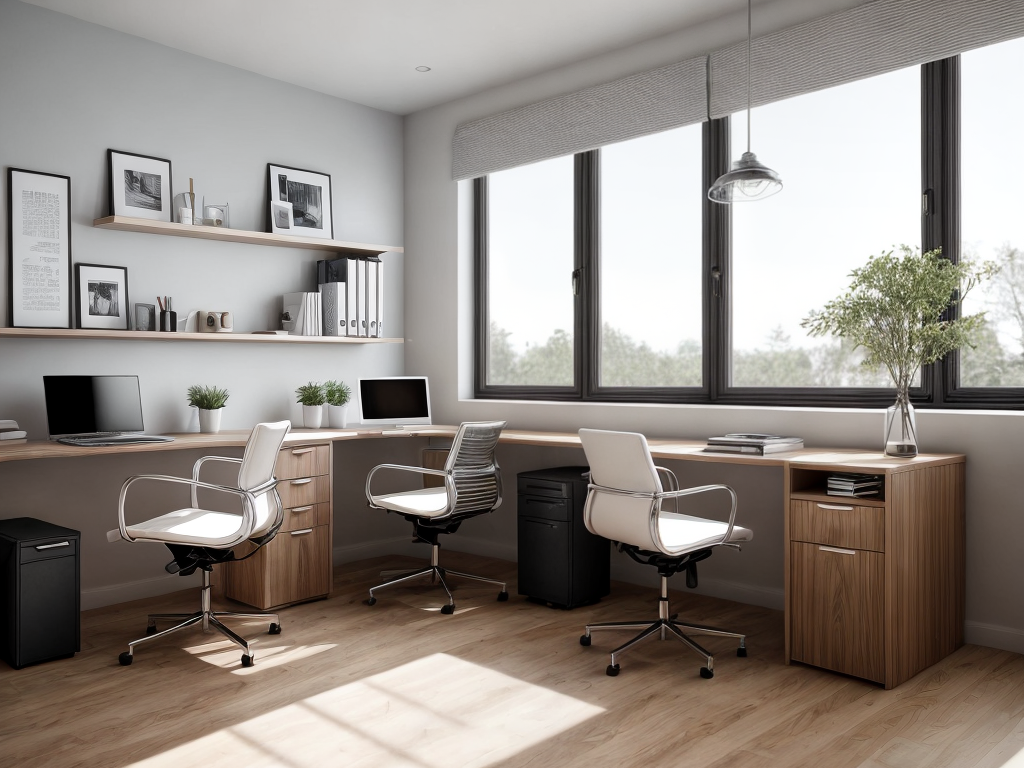
As I stand amidst towering structures that were once just blueprints, it is clear that the future of construction has arrived. The world of 3D printing has revolutionized the industry, allowing for faster, more efficient, and cost-effective building methods. But what exactly is 3D printing in construction, and how does it work? In this discussion, I will explore the evolution of 3D printing in construction, the advantages it brings to the industry, the innovations in 3D printed building materials, and the applications in architectural design. Moreover, I will delve into the challenges that need to be overcome and provide a glimpse into the promising future of 3D printing in the construction sector.
The Evolution of 3D Printing in Construction
3D printing in construction has undergone significant advancements and transformations, revolutionizing the way buildings are designed and constructed. The evolution of 3D printing in construction has brought about a paradigm shift in traditional construction techniques. This innovative technology has the potential to disrupt the industry by offering numerous benefits and future implications.
One of the key aspects of the evolution of 3D printing in construction is the ability to create complex structures with intricate details that were previously impossible using conventional methods. This opens up new possibilities for architects and designers to explore unique and creative designs, pushing the boundaries of what is achievable in construction.
Additionally, 3D printing in construction allows for greater precision and accuracy in the fabrication process. This technology eliminates human error and reduces the need for manual labor, leading to faster construction times and cost savings. Moreover, it enables the use of sustainable materials, reducing waste and environmental impact.
Looking towards the future, the implications of 3D printing in construction are vast. It has the potential to address the global housing crisis by providing affordable and efficient housing solutions. Furthermore, it can revolutionize disaster relief efforts by quickly constructing temporary shelters in affected areas.
Advantages of 3D Printing in the Construction Industry
The utilization of 3D printing technology in the construction industry offers numerous advantages and opportunities for improved efficiency and innovation. One of the key advantages of 3D printing in construction is its cost effectiveness. By using 3D printing, construction companies can significantly reduce material waste and labor costs. Traditional construction methods often involve the overuse of materials and require extensive manpower, leading to higher costs. However, with 3D printing, materials can be used more efficiently, reducing waste and saving money. Additionally, 3D printing allows for increased sustainability in the construction industry. The technology enables the use of eco-friendly materials and reduces carbon footprint by minimizing transportation needs. Moreover, 3D printing can create structures that are more energy efficient, reducing energy consumption in the long run.
| Advantages of 3D Printing in Construction |
|---|
| Cost Effectiveness |
| Sustainability |
| Improved Efficiency |
| Innovation |
Innovations in 3D Printed Building Materials
In the realm of construction, groundbreaking innovations have emerged in the realm of 3D printed building materials. These advancements in 3D printed concrete and sustainable building materials are transforming the way we construct buildings. Here’s a look at some of the most exciting developments:
-
Improved strength and durability: 3D printed concrete is being formulated to have enhanced strength and durability, making it suitable for a wide range of construction projects. This allows for the creation of more robust and long-lasting structures.
-
Customizable designs: With 3D printing, architects and designers have the freedom to create intricate and complex designs that were previously difficult to achieve. This opens up new possibilities for creating unique and visually stunning buildings.
-
Reduced waste and carbon footprint: Sustainable building materials, such as bio-based polymers and recycled materials, can now be 3D printed. This not only reduces waste but also lowers the carbon footprint of the construction industry, making it more environmentally friendly.
-
Faster construction process: 3D printing enables rapid construction, as large-scale structures can be printed layer by layer in a fraction of the time it would take using traditional methods. This can significantly reduce construction timelines and costs.
These innovations in 3D printed building materials are paving the way for a more sustainable and efficient future in construction. With continued research and development, we can expect even more exciting advancements in the field.
Applications of 3D Printing in Architectural Design
As an architect, I have always been fascinated by the potential of 3D printing in architectural design. This innovative technology allows us to push the boundaries of traditional design methods and create complex and intricate structures that were once unimaginable. Not only does 3D printing offer design innovation, but it also provides significant cost and time benefits, allowing for faster and more efficient construction processes. With 3D printing, we can revolutionize the way we approach architectural design, making it more sustainable, customizable, and accessible to all.
Design Innovation Through 3D Printing
With the advent of 3D printing technology, architectural design has experienced a revolutionary transformation, allowing for unparalleled design innovation and endless possibilities. Here are four ways in which 3D printing is driving design innovation in the field of construction:
-
Complex geometries: 3D printing enables architects to create intricate and complex designs that were previously impossible or extremely time-consuming to construct.
-
Customization: The ability to 3D print individual components allows for greater customization in architectural design, catering to specific client needs and preferences.
-
Rapid prototyping: 3D printing accelerates the design iteration process, allowing architects to quickly create and test multiple prototypes before finalizing the design.
-
Sustainable design: By using sustainable materials and optimizing designs for material efficiency, 3D printing contributes to the development of more environmentally friendly and resource-efficient buildings.
As 3D printing technology continues to advance, the future of design in construction looks promising, offering architects new tools to push the boundaries of creativity and innovation.
Cost and Time Benefits
The cost and time benefits of 3D printing in architectural design are evident in the streamlined construction process and reduced project timelines. By utilizing 3D printing technology, construction companies can achieve significant cost savings and efficiency improvements. Traditional construction methods often involve complex and time-consuming processes, such as creating molds and assembling components onsite. With 3D printing, these steps can be eliminated or simplified, resulting in cost reductions and faster project completion. Additionally, 3D printing allows for greater precision and accuracy in construction, reducing the risk of errors and rework. This not only saves time but also minimizes material waste. Overall, the adoption of 3D printing in architectural design offers a cost-effective and efficient solution for the construction industry.
Overcoming Challenges in Implementing 3D Printing in Construction
Implementing 3D printing in construction presents various challenges that need to be overcome for successful integration. In order to effectively overcome these challenges, it is important to develop and implement appropriate strategies. Here are four key challenges faced in implementing 3D printing in construction and the corresponding strategies to address them:
-
Lack of awareness and understanding: Many construction professionals are not familiar with the capabilities and benefits of 3D printing technology. To address this challenge, education and training programs should be developed to increase awareness and understanding of 3D printing in construction.
-
High initial costs: The initial costs of implementing 3D printing technology can be significant. To overcome this challenge, it is important to carefully evaluate the return on investment and consider long-term cost savings. Additionally, exploring potential partnerships and collaborations can help in sharing the costs.
-
Regulatory and legal barriers: The existing regulations and building codes may not be compatible with 3D printing technology. To overcome this challenge, it is necessary to work closely with regulatory bodies and policymakers to develop new standards and guidelines that are suitable for 3D printed construction.
-
Material limitations: The availability of suitable construction materials for 3D printing can be limited. To address this challenge, research and development efforts should focus on the development of new materials that are specifically designed for 3D printing in construction.
The Future of 3D Printing in the Construction Sector
As we look ahead to the future of 3D printing in the construction sector, it is important to consider the numerous advantages it brings to the industry. One of the key benefits is the ability to create complex and intricate designs with ease, resulting in more efficient and cost-effective construction processes. Additionally, 3D printing has the potential to revolutionize the construction industry by reducing waste, improving sustainability, and allowing for greater customization in building designs.
Advantages of 3D Printing
One of the key advantages of 3D printing in the construction sector is its potential to revolutionize the way buildings are designed and constructed. Here are four reasons why 3D printing is advantageous in construction:
-
Cost savings: 3D printing allows for the use of less material, reducing waste and lowering construction costs. Additionally, it enables the production of complex shapes and structures that would otherwise be expensive to create using traditional construction methods.
-
Environmental sustainability: By optimizing material usage and reducing waste, 3D printing in construction has the potential to significantly decrease the industry’s carbon footprint. It also allows for the use of recycled and sustainable materials, further promoting environmental sustainability.
-
Faster construction: With 3D printing, buildings can be constructed much faster than with traditional methods. This technology enables rapid prototyping and on-site fabrication, reducing construction time and improving project efficiency.
-
Design flexibility: 3D printing gives architects and designers more freedom to create intricate and innovative designs. It allows for the customization of building components, enabling the construction of unique and personalized structures.
Impact on Construction Industry
The future of 3D printing in the construction sector holds immense potential for transforming the way buildings are designed and constructed. This technology has a significant impact on the economy and offers sustainability benefits. Let’s take a closer look at these two aspects:
Impact on Economy:
- Cost Reduction: 3D printing can reduce labor costs and material waste, making construction more affordable.
- Increased Efficiency: The speed and accuracy of 3D printing allow for faster project completion, leading to higher productivity and cost savings.
- Job Creation: The adoption of 3D printing in construction can create new job opportunities, particularly in design and maintenance of these advanced systems.
Sustainability Benefits:
- Reduced Material Waste: 3D printing uses only the necessary amount of material, minimizing waste and reducing environmental impact.
- Energy Efficiency: The use of sustainable materials and streamlined construction processes decrease energy consumption.
- Design Flexibility: 3D printing enables the creation of complex and optimized structures, resulting in resource-efficient buildings.





